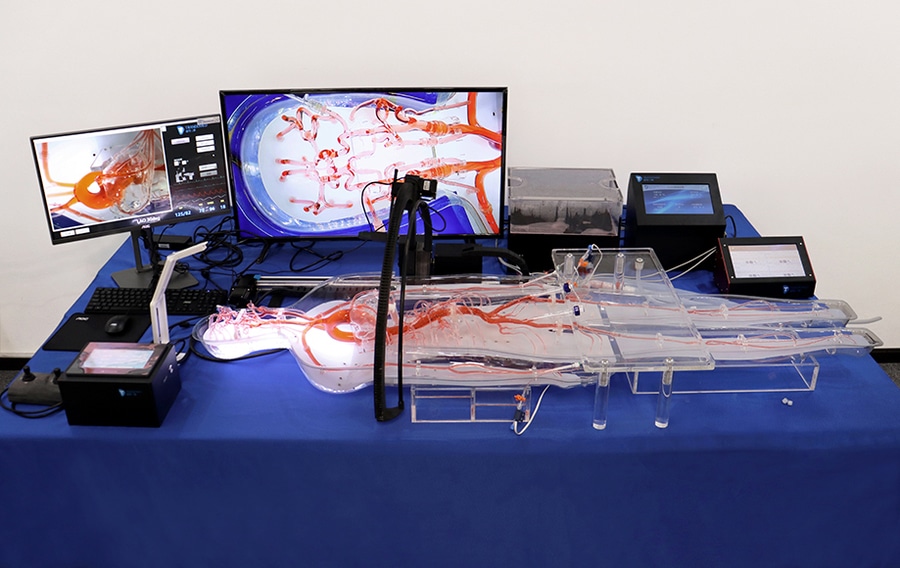
#Industry News
Simulated C-Arms: Advancing Medical Training through Realistic Imaging Technology
Endovascular Intervention Trainer
Introduction:
In the field of medical training, simulation plays a crucial role in preparing healthcare professionals for real-life scenarios. Simulated C-arms, a revolutionary advancement in medical simulation technology, have emerged as powerful tools for training and skill development in various medical disciplines. These simulated devices replicate the imaging capabilities and functionalities of real C-arms, providing a safe and realistic environment for trainees to practice and refine their skills. In this article, we will delve into the world of simulated C-arms, exploring their benefits, features, and applications in medical training.
Simulated C-Arms: Features and Capabilities:
Simulated C-arms are designed to closely mimic the appearance, functionality, and imaging capabilities of real C-arms. They consist of a replica C-arm apparatus with a high-resolution display screen. Key features and capabilities of simulated C-arms include:
1.Realistic Imaging: Simulated C-arms generate high-quality, real-time imaging that accurately represents the anatomical structures of patients or phantoms. Trainees can practice visualizing and interpreting X-ray images, fluoroscopic imaging, and other relevant modalities.
2.Interactive Controls: Simulated C-arms offer a wide range of interactive controls, allowing trainees to manipulate imaging parameters, adjust image quality, and explore various imaging modes. This enables them to understand the impact of different settings on image clarity and optimize the imaging process.
3.Procedure Simulation: Simulated C-arms provide a virtual environment where trainees can perform simulated procedures. They can practice positioning the C-arm, angling the X-ray source, maneuvering the image intensifier, and capturing images at different angles and orientations.
Benefits of Simulated C-Arm Training:
1.Safe Learning Environment: Simulated C-arms provide a controlled and safe learning environment for trainees to practice without the risks associated with live patient procedures. Mistakes and errors can be made without compromising patient safety, allowing trainees to learn from their experiences and improve their skills.
2.Realistic Scenario Replication: Simulated C-arms offer a high level of realism, replicating the challenges and complexities encountered during actual procedures. Trainees can develop critical decision-making skills, enhance their hand-eye coordination, and improve their ability to adapt to unexpected situations.
3.Repetitive Practice: Simulated C-arms enable trainees to engage in repetitive practice, which is crucial for skill acquisition. Trainees can perform procedures multiple times, refining their techniques, and building muscle memory to enhance efficiency and accuracy.
Applications of Simulated C-Arms:
Simulated C-arms find applications in various medical disciplines, including:
1.Interventional Radiology: Trainees can practice image-guided procedures such as angiography, embolization, and stent placement, improving their ability to navigate complex vasculature and perform precise interventions.
2.Orthopedics: Simulated C-arms allow orthopedic surgeons to practice fracture reduction, hardware placement, and joint injections, enhancing their proficiency in using fluoroscopic guidance.
3.Anesthesiology: Simulated C-arms aid anesthesiologists in understanding the impact of patient positioning on imaging quality, optimizing the use of C-arms during procedures such as epidural placements or regional anesthesia.
Conclusion:
Simulated C-arms have revolutionized medical training by providing a realistic and immersive learning experience. These advanced simulation devices offer trainees the opportunity to develop and refine their skills in a safe and controlled environment. With their realistic imaging capabilities, interactive controls, and diverse applications, simulated C-arms are poised to play a vital role in shaping the future of medical education and improving patient outcomes through well-trained healthcare professionals.





